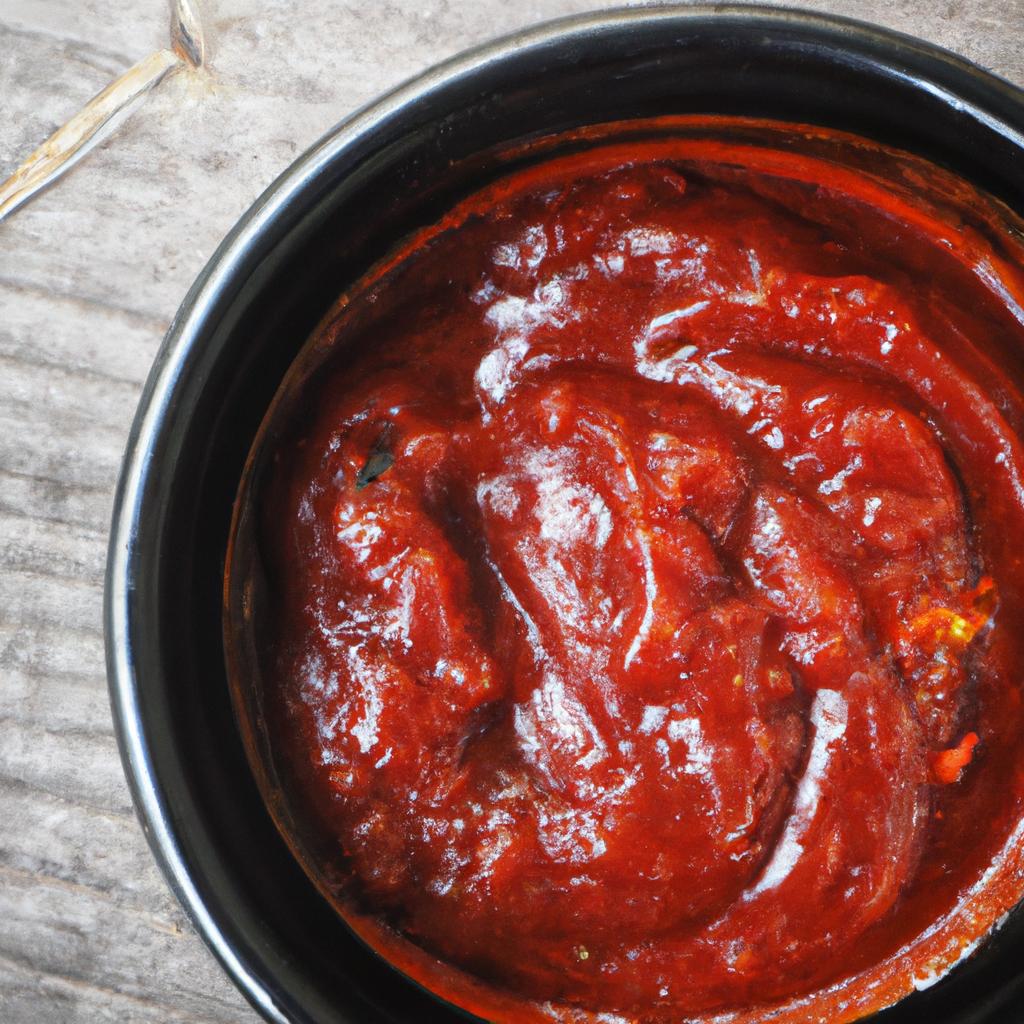Gochujang sauce

Korean cuisine has taken the world by storm, and for good reason. Its bold, balanced flavours are a treat for the senses, and one dish that perfectly captures this culinary brilliance is the Gochujang sauce. Gochujang is a fermented chili pepper paste that is inseparable from Korean cuisine. The sauce is used as a condiment, a marinade, and a flavouring agent in a variety of dishes.
The origins of Gochujang sauce can be traced back to the 10th century when it was first mentioned in a document called Samguk Sagi. The sauce was originally made by fermenting soybeans, glutinous rice, and chili peppers. Over time, the recipe evolved, and today, various ingredients are used in the process of making Gochujang, depending on personal preferences and regional variations.
Gochujang sauce is known for its bold, spicy flavour, which is balanced out by its umami-rich taste. The sauce has a thick, sticky texture, and its colour ranges from a vibrant red to a deep brown. The increased popularity of Korean cuisine has resulted in Gochujang sauce becoming a widely available ingredient in many countries. However, nothing beats the satisfaction of making it from scratch in your own kitchen.
Making Gochujang sauce at home is easier than you’d expect, and the results are truly worth the effort. The process of making Gochujang sauce involves three main steps: soaking, boiling, and fermenting. The first step is to soak the glutinous rice in water for a few hours until it becomes soft. Some recipes also call for the use of sweet rice powder instead of soaked rice to increase the thickness and stickiness of the sauce. The next step is to boil the rice until it becomes soft and mushy. The rice is then mashed to a paste-like consistency and combined with other ingredients such as chili powder, soy sauce, and sugar. The mixture is then set aside to ferment, and this is where the magic happens. During fermentation, the microorganisms in the mixture eat the sugar and break down the proteins, turning the mixture into a flavourful, pungent, and spicy paste that is a staple in Korean cuisine.
Gochujang sauce can be used in a variety of dishes and cuisines. It adds a depth of flavour to everything from stir-fries, marinades, glazes, soups, and stews. It can also be used as a dip or a spread on toast, crackers, or sandwiches. As if its versatility wasn’t enough, Gochujang sauce also has numerous health benefits. It is rich in vitamins A and C, as well as capsaicin, which has been linked to numerous health benefits, including boosting metabolism and reducing inflammation.
In conclusion, Gochujang sauce is a must-try for anyone interested in Korean cuisine or anyone looking to spice up their cooking with a bold, flavourful, and healthy ingredient. The sauce may seem intimidating, but with a little patience and effort, you can recreate the magic of Korean cuisine in your own home. The recipe for Gochujang sauce is adaptable, so feel free to experiment with ingredients and make it your own. With its complex flavour profile and myriad of uses, Gochujang sauce is sure to become a staple in your kitchen.
Sure, here is a recipe for Korean Gochujang sauce:
Ingredients:
- 1/2 cup gochujang paste (Korean red chili pepper paste)
- 2 tablespoons rice vinegar
- 2 tablespoons soy sauce
- 2 tablespoons honey
- 1 tablespoon sesame oil
- 1 tablespoon minced garlic
- 1 tablespoon grated ginger
- 1 tablespoon water (optional, to thin out sauce)
Instructions:
- In a bowl, mix together gochujang paste, rice vinegar, soy sauce, honey, sesame oil, minced garlic, and grated ginger.
- Stir everything until the mixture is well combined and smooth.
- If the sauce is too thick, add water to thin it out. Start with 1 tablespoon and adjust as needed.
- Taste the sauce and adjust the seasoning, adding more honey or soy sauce according to your preference.
- Serve the gochujang sauce as a dipping sauce or use it as a marinade. It is particularly delicious with grilled meats, roasted vegetables, or even as a dressing for salads. Enjoy!